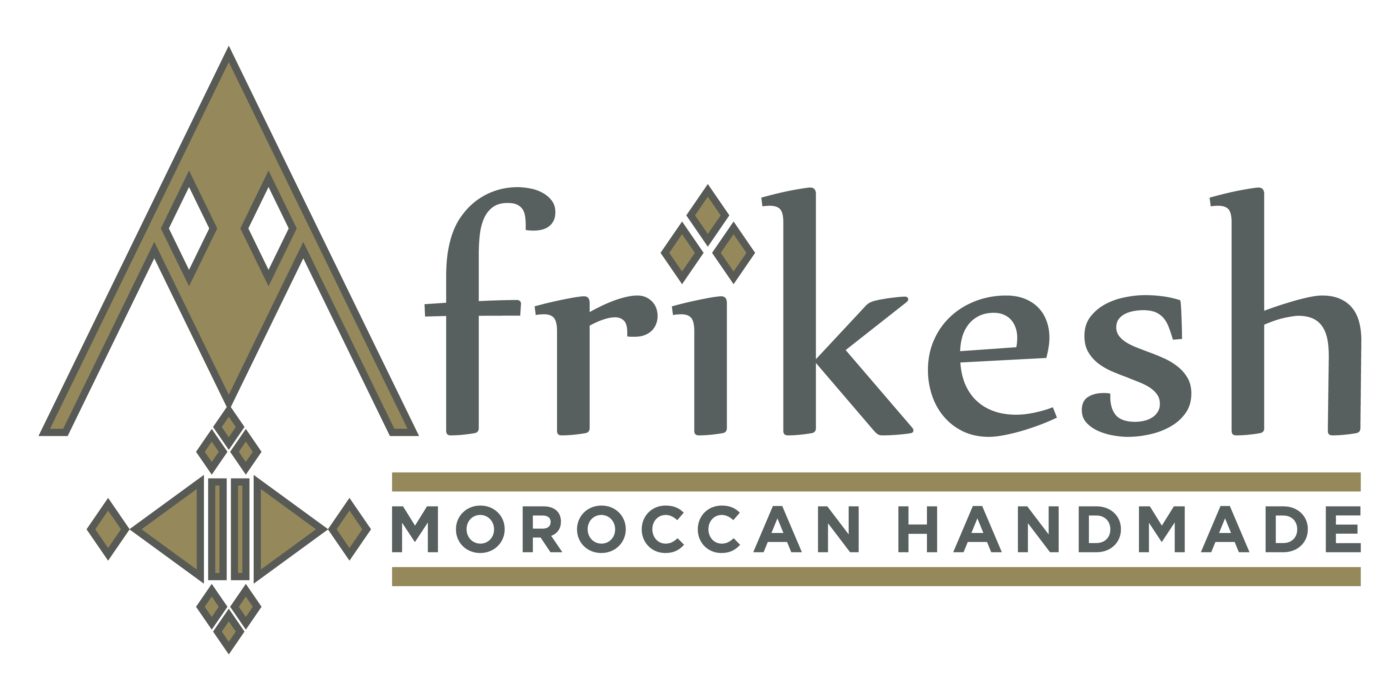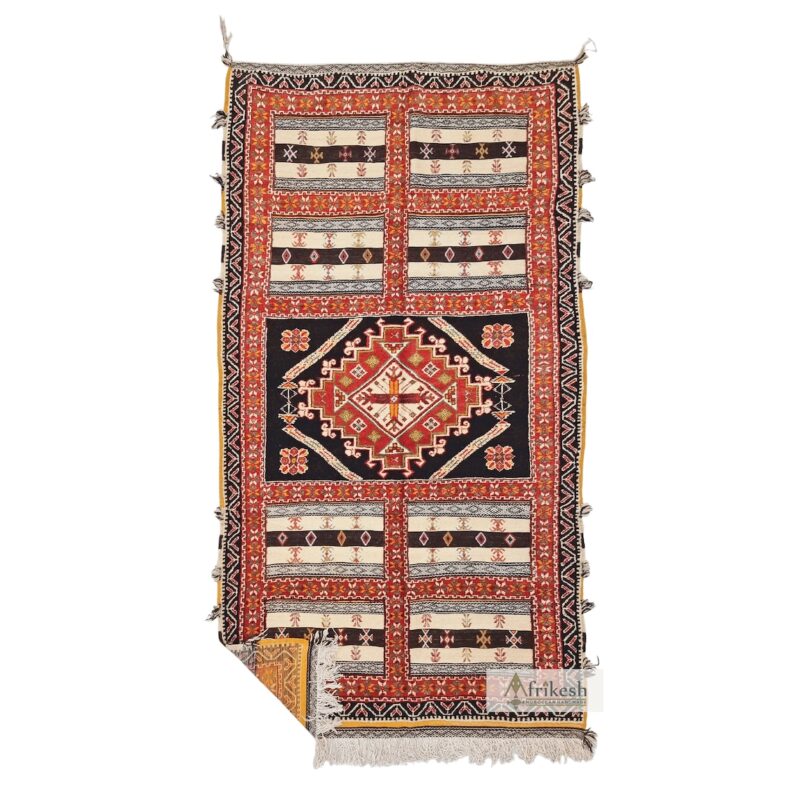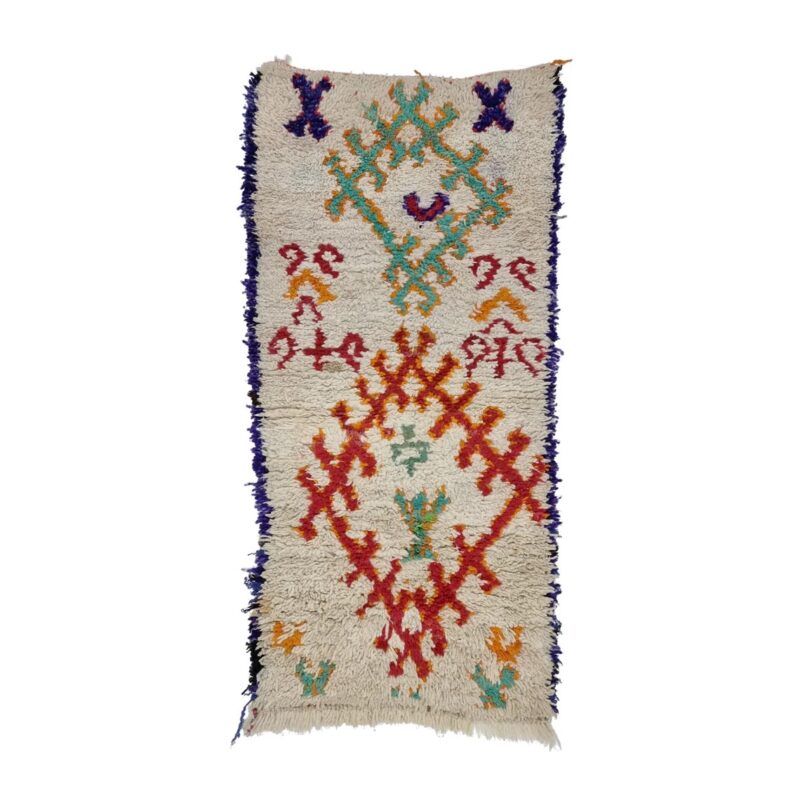Hidden Meaning of Berber Symbols on Moroccan Rugs
Within the rich culture of the Berbers of North Africa lies a captivating world of symbolism. The Berbers, also known as Amazigh, meaning “the free people” or “the noble people”, have not merely survived the tides of time but have thrived, preserving their distinctive identity.
Central to this identity are the symbols that adorn a multitude of media. These emblems are present on walls, skin, leather, and textiles as mesmerizing embelishing patterns. Dating back to before 3000 BCE, they are more than mere markings; they are in fact a profound language, a visual lexicon transcending generations, carrying tales of heritage, spirituality, and resilience.
Moroccan rugs, with their intricate patterns and vibrant colors, are canvases where the weavers encapsulate the collective wisdom of generations. Each rug is a narrative, a visual poem that tells tales of tribal affiliations, familial bonds and the ever-changing landscapes that have witnessed the Berber journey through time.
Women emerge as the artisans and the storytellers. Their skilled hands work the loom like an ancient instrument weaving the threads of heritage. In effect, the act of weaving transcends the utilitarian; it is a form of expression and empowerment, allowing women to imprint through symbolism and colors their individual stories. They thus become the custodians of tradition, passing down not just a craft but a legacy that reflects the resilience and creativity of Berber women throughout history.
Geometry, with its precision and balance, is a hallmark of Berber symbolism. Verily, geometric patterns are not merely decorative; they embody a profound understanding of cosmic order. Circles, triangles and squares intersect and intertwine, reflecting the interconnectedness of life, the cyclical nature of seasons, and the equilibrium that the Amazigh people seek in their relationship with the world.


Signification Of Berber Symbols on Moroccan Rugs

Aries
A symbol of physical power, strength, life, and generosity, this emblem embodies the unwavering force residing within the essence of vitality. It is a testament to the resilience inherent in the human spirit and the energy that empowers individuals to overcome challenges and embrace life’s journey with fortitude. Hence, it encapsulates the formidable might that emanates from physical prowess and the generosity of life’s blessings.

Star
Symbolizing hope, direction, and cosmic connection, the star that guides man in the night emerges as more than a mere luminous point. In fact, it transforms into a metaphorical guide, a navigator that steers the course of humanity through the profound darkness of the night.

Barley
As a profound symbol of fertility, this emblem encapsulates the very essence of life’s abundant and regenerative forces. Rooted in the rich soil of creation, it burgeons with the promise of growth, prosperity and the perpetuation of life itself. Thus, its meaning extends into the realms of creativity, abundance and the inexhaustible cycles of nature.

Diamond
A symbol of women and a union of opposites, this figure transcends binary distinctions, encapsulating the harmonious convergence of diverse elements. It is a visual hymn to the strength, resilience, and multifaceted nature of women, portraying them not as singular entities but as an amalgamation of complementary qualities. Indeed, this emblem challenges dichotomies and celebrates the richness that emerges when seemingly contradictory forces unite.

Eye
This symbol is known as a talisman against the malevolent gaze of the evil eye. It represents a shield that wards off negative energies. Therefore, it protects from unseen adversities by casting a watchful eye over individuals and spaces.

Lion’s paw
This symbol represents strength and protection. It embodies an indomitable force, a sentinel presence that resonates with the primal essence of resilience and guardianship. It encapsulates the robust power required to withstand adversity, a testament to the unwavering fortitude of the human spirit.

Lozenge
The lozenge is a symbol of womanhood and feminine fertility. It refers to the cyclical rhythms of life, embodying the fertility that flows through the cycles of nature and the female experience. Also, it symbolizes the powerful journey of womanhood and celebrates the strength, resilience and nurturing qualities of the feminine spirit.

Partridge eyes
This symbol of beauty is a timeless celebration of the diverse facets that compose beauty. It is woven with qualities that resonate both internally and externally as an invitation to contemplate beyond the surface. Moreover, it calls for the appreciation of the expansive and transformative nature of beauty in all its nuanced dimensions.

Eight-pointed Star
The eight-pointed star is a symbol that is believed to catch ghosts. Therefore, it invokes a sense of enigmatic power and becomes a metaphysical net capturing the elusive spirits that dwell in the shadows of the cosmic tapestry.

Womb
The womb is the symbol of fertility. It evokes the sacred space of creation and the transformative power inherent in the womb. It also represents the life-giving forces that reside within the feminine realm, embodying the nurturing essence of fertility. This emblem invites contemplation on the cycles of birth, growth, and regeneration as an interconnected dance between the human experience and the eternal cycles of nature.

Snake
The snake is a symbol for holiness and has magical and medicinal properties. Its form, a representation of cosmic dance, symbolizes regeneration and transformation. In fact, the snake holds mystical significance within various cultures, channeling transformative forces, while its shedding skin symbolizes renewal. Additionally, the snake is historically valued for its potentially healing properties; its venom representing both danger and beneficial attributes.





















